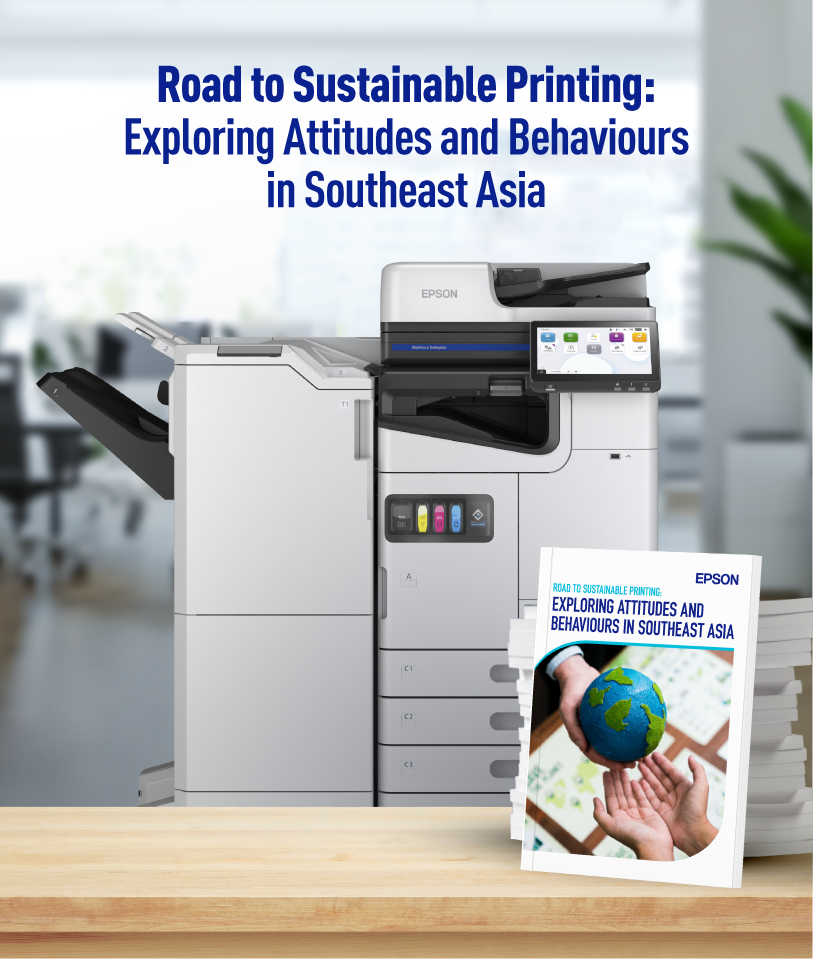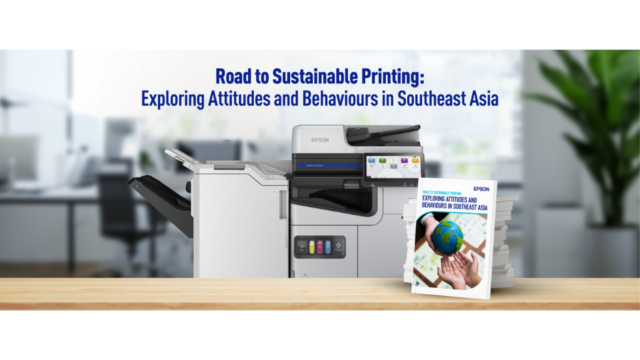PHILIPPINES, Manila – Epson, a global leader in professional printing, has released the latest key findings from its report, Road to Sustainable Printing: Exploring Attitudes and Behaviours in Southeast Asia. Based on a survey of 1,500 office decision-makers across Singapore, Malaysia, Thailand, Indonesia, The Philippines, and Vietnam, the report uncovers how printing behaviors have changed in line with an increased focus on sustainability in the workplace. However, many businesses and working individuals still do not have a clear view of sustainable printing solutions.
Hybrid working has changed the way we print
Printing is alive in Southeast Asia with 40% of office equipment decision-makers and end-users across the region using it on a daily basis. However, hybrid working and digitalization have led to lasting changes, increasing the need for flexibility in how we print.
Digital capabilities that were once regarded as nice to have are now necessities in daily business operations. For many organizations, starting with digital document-sharing is a logical first step in their digitalization journey. More traditional sectors, including construction (39%) and retail (40%), appear slower to switch to softcopy compared to consulting and professional services (50%) and advertising and marketing (48%).
The size of a business matters, too, with 41% of small businesses (1-50 employees) and 48% of medium-sized businesses (51-500 employees) switching to softcopy documents. Larger businesses (501+ employees) which are likely to be less agile, fall between the two with 45% using softcopy documents.
This dovetails with the finding that 44% of respondents cited that they want to see advanced digital integration, such as cloud printing, in their workplace printing solutions, coming in second to their request for more environmental friendliness (50%). Additionally, about 4 in 5 respondents cited that compactness of the printer as important in workplace printing requirements now, reflecting the trend of businesses seeking high productivity and durability within limited space constraints.
There are many factors contributing to changing printing habits, including convenience (46%), cost effectiveness (44%) and the increased awareness of sustainable printing practices (41%). These insights highlight the importance of balancing practicality, sustainability, and cost-efficiency in printing practices – as well as supporting office workers to catch up on sustainability initiatives.
Intention-action gap despite increased awareness of sustainability

Notably, there is an increased awareness across businesses of sustainability solutions and a desire to find eco-friendly printing options that lessen the impact on our environment. More than 3 in 5 (66%) respondents stated that sustainability is an important factor when using or choosing a printer. About 74% of individuals and companies are ‘very’ and ‘moderately’ aware of the environmental impact of printing, and 63% are ‘likely’ or ‘very likely’ to pay more for sustainable printing solutions.
Across the board, many are thinking more deeply about their choices as they adopt other sustainable practices such as double-sided printing (38%) and participating in paper-recycling initiatives (34%).
While intentions are good and there appears to be high awareness in considering sustainability for printing matters, there is a need for more education surrounding what being eco-friendly actually looks like in practice.
“In Southeast Asia, we have seen a greater preference towards sustainability. While most respondents said sustainability is an important factor in choosing a printer, less than one third said they are willing to pay for more sustainable measures, leaving a wide gap for inaction. However, what is good for the environment can also be good for business,” shared Jester Cruz, Senior Regional Manager for Corporate Products, Epson Southeast Asia.
“The good news is that the desire is there – with over half of the respondents saying they would definitely switch to an inkjet printer from a laser copier if it was shown to have less impact on the environment.”
Misconceptions on the environmental impact of inkjet versus laser printers
The report found an ongoing misconception across the region that laser printers have a lower environmental impact in comparison to inkjet printers. One third (34%) of respondents said they believe laser copiers have a lower environmental impact than inkjet printers, while only 29% believed inkjet printers to be better for the environment. A further 29% were unsure about the comparison.
Epson Southeast Asia phased out laser printers completely by the end of 2023, after an announcement that it would stop global sales and distribution of laser printers and will transition fully to inkjet printers. This is due to laser technology’s requirement for heat during the print process, and therefore increased electricity use.
“In today’s offices, only central air conditioning and lighting consume more energy than office automation equipment. In fact, printers and multifunction printers (MFPs) account for as much as 10%[1] of power consumption. Replacing laser printers with Epson’s Heat-Free inkjet printers can cut printing-related electricity significantly up to 85%[2]. The lower electricity consumption also reduces environmental impact because it reduces CO2 emissions,” shares Cruz.
[1] Epson research based on data from a commissioned survey conducted in March 2018 by SOMPO Risk Management & Health Care Inc.
[2] Testing was commissioned by Epson and conducted by Keypoint Intelligence. One specific model was selected from colour laser multifunction printers in the 65-70 ppm class. Epson WorkForce Enterprise WF-C21000 with 100 ppm (equivalent model in Europe was used during the evaluation). This data is as of September, 2020. Devices were tested in default mode as per Keypoint Intelligence’s proprietary standard energy consumption test methods. Calculations were based on a weekday workload of 2 x 4 hours printing + 16 hours in sleep/standby mode, and weekend energy use of 48 hours in sleep/standby mode. A total of 69 pages of workload test pattern using DOC, XLS, PPT, HTML, PDF files and Outlook email messages were printed six times in each 4-hour printing period.
“People consider energy efficiency and minimizing power consumption to be of the greatest importance but it’s also imperative to showcase how these environmental benefits translate to dollars and cents. Epson strongly believes that innovation can make an economic case for climate-friendly action. The future relies on sustainable technologies and it looks promising. With our philosophy of developing efficient, compact, and precise technologies, Epson will continue to champion sustainability as a foundational business practice.”
Download the full Road to Sustainable Printing: Exploring Attitudes and Behaviours in Southeast Asia report by Epson Southeast Asia here.





